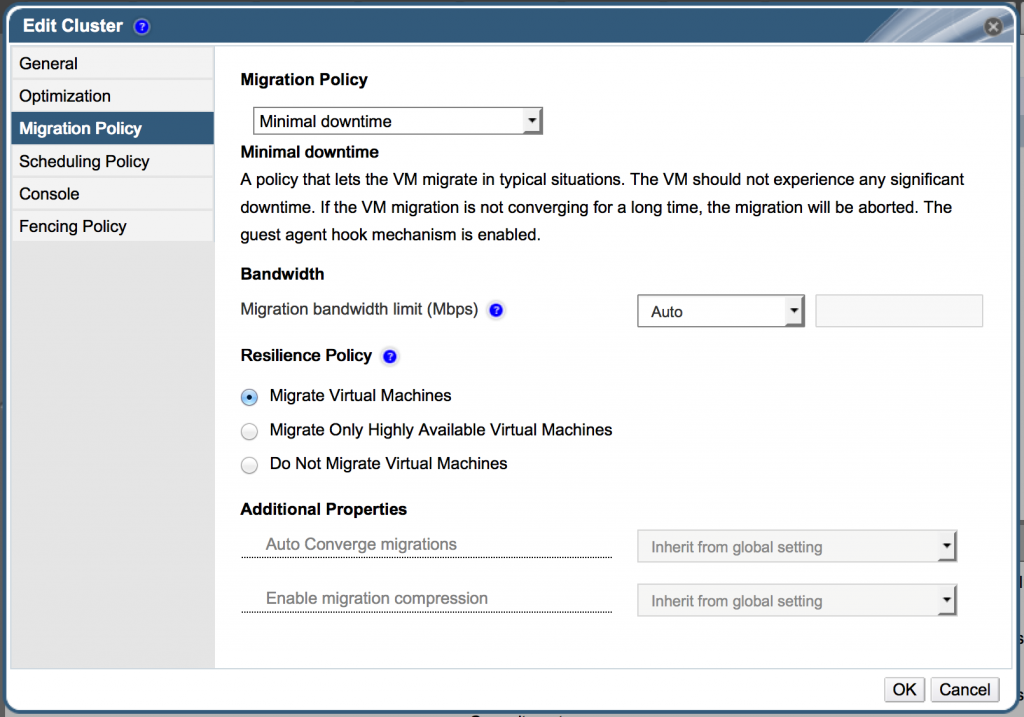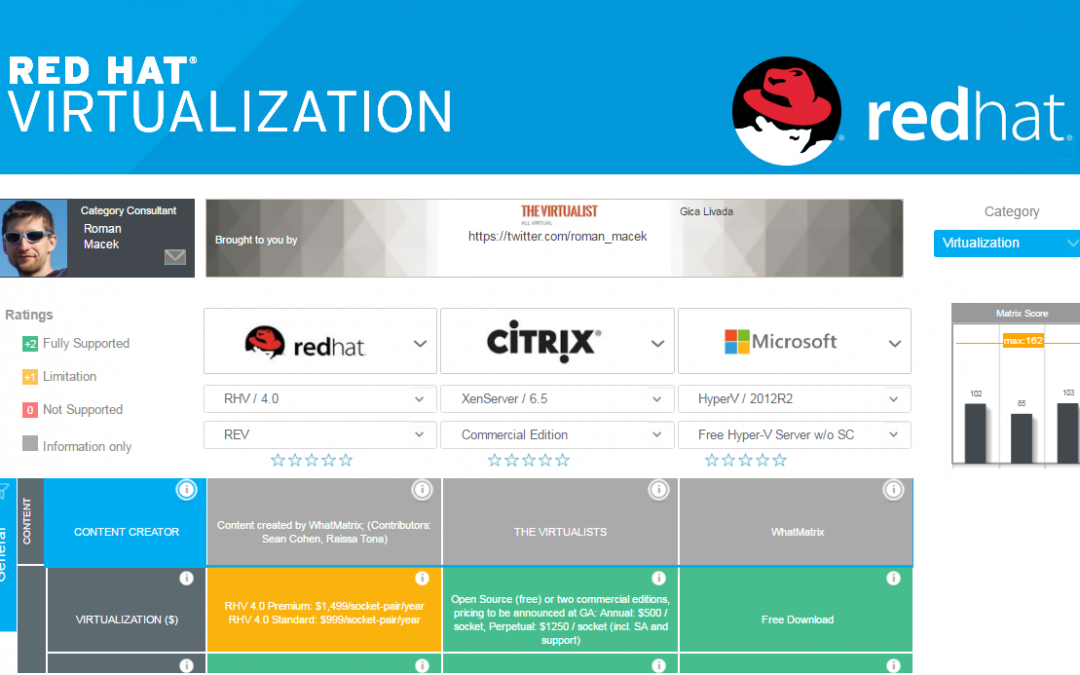Red Hat has updated its Virtualization Platform with the 10th (!) major release – introducing a significant number of new features alongside the (subtle) re-branding to RHV (from RHEV).
Our popular “Virtualization Platform” comparison has been updated accordingly! HERE you can directly compare Red Hat’s feature set with VMware’s, Microsoft’s, Citrix’s etc and print evaluation reports.
Here are some of the new features of Red Hat Virtualization 4 – for a full list of enhancements see the release notes here.
The hypervisor has been redesigned, while the architecture is still defined by a “thin” hypervisor with an appliance approach, the new design allows for flexibility when additional software such as new drivers or monitoring software is needed.
- Customers and partners are now able to add new functionality and software when necessary. As with the previous architecture, features SELinux and IPtables are still pre-tuned to help protect virtual machines from a security perspective.
- Cockpit administration console. Cockpit is complementary to Red Hat Virtualization-Manager and provides deeper insight in to the hypervisor. Cockpit is designed to allow for faster issue remediation and better insight into hypervisor specific activities. Additionally, everything from hypervisor services, to advanced networking, storage, and subscriptions can be configured from Cockpit. This plugin is accessible from a secure web portal or as a plugin to Red Hat Virtualization Manager.
- New Dashboards – starting with version 4, the new default view is the brand new “Dashboard” tab. This provides a faster “at-a-glance” view into the environment. Additionally this also serves as a preview into what is to come for RHV Manager over the next few releases.

- it is aware of them from an infrastructure standpoint, enabling administrators to make better decisions based on overall impact.
- Advanced Live migration policies – ability to tune how live migrations are carried out – with significant impact on the overall performance of tier-1 applications (time to migrate / downtime)
- Label Based Affinity – The label functionality enables the administrator to configure one virtual machine’s affinity, then create an affinity label based on that configuration. The remaining virtual machines are easily configured by simply applying that same affinity label. This is much faster as compared to configuring individual virtual machine settings
- Advanced Networking Control: The new “External Partner Network API” helps administrators to integrate with SDN partners like Midokura, Nuage Networks and others in order offload virtual machine network configuration and data plane control.
Additionally, there is support for Red Hat OpenStack Platform 8 Neutron by way of the native Open vSwitch ML2 agent. Like the External Partner Network API, it will offload virtual machine network configuration and data plane control. This is critical for creating applications that span both Red Hat Virtualization and Red Hat OpenStack Platform. Any application architecture that requires both traditional virtualization and OpenStack will require network integration. The Neutron integration can create an optimal connection between the two environments
For more details on the RHV 4 update see this section of the release notes or Jon Benedict’s blog HERE – Enjoy!
Roman Macek – WhatMatrix Category Consultant (Virtualization)
http://www.thevirtualist.org/


Latest posts by Community Author (see all)
- WhatMatrix Q&A with Citrix– Virtual Desktop, DaaS, VDI and WVD - July 5, 2020
- We hope you are well – help for vendors – free lead generation - March 27, 2020
- Landscape Report Guidance: Cloud Management Platforms - February 5, 2020





